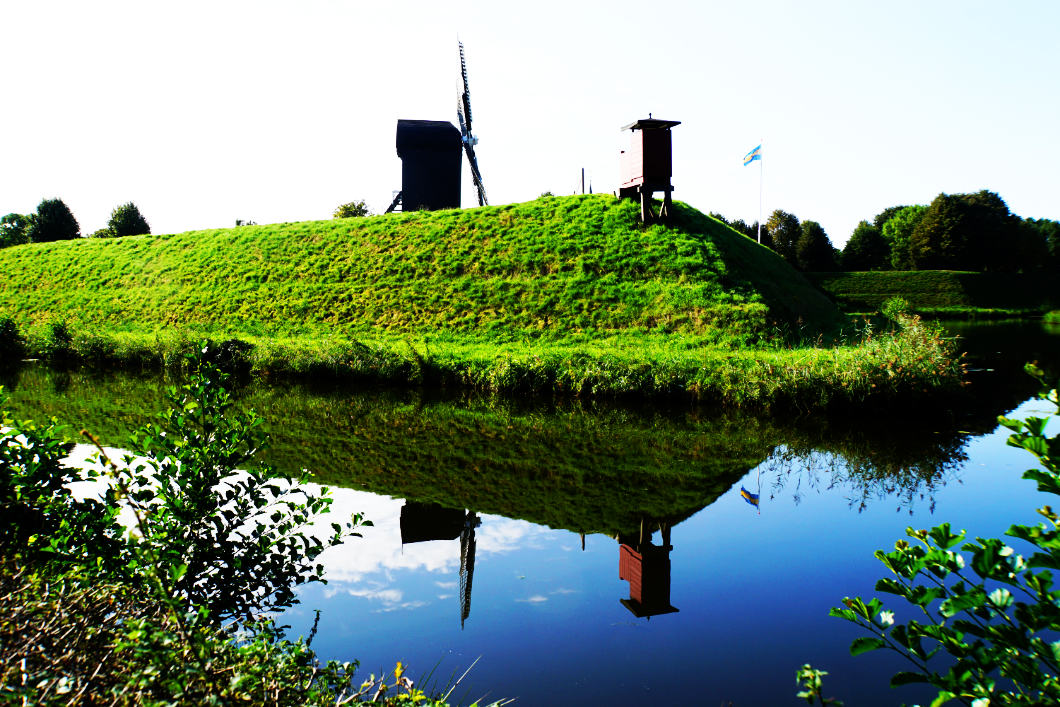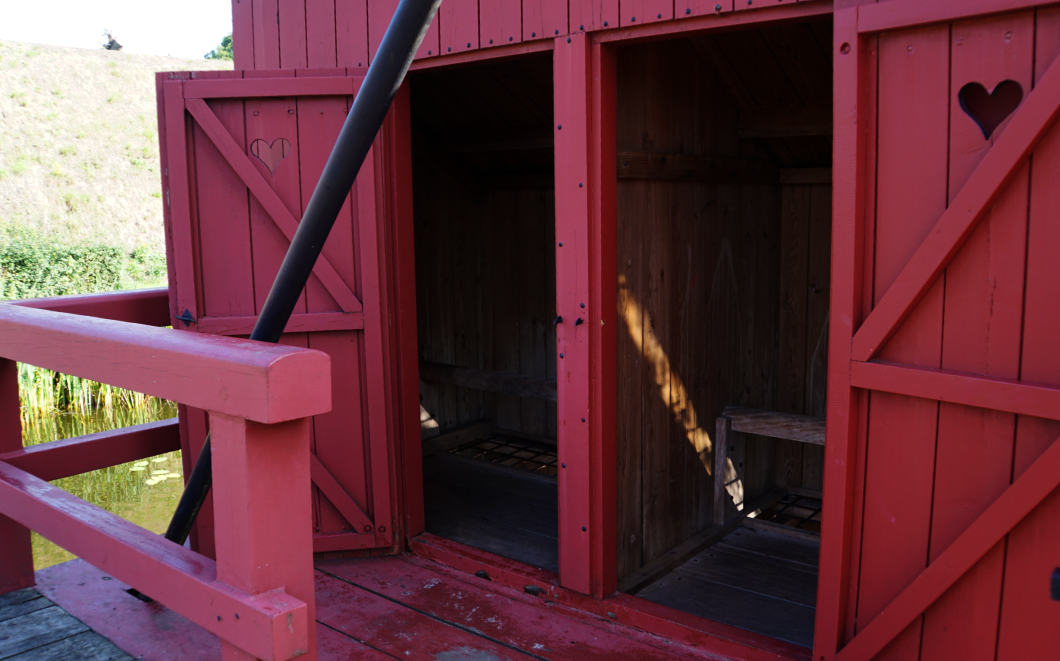Just behind the German/Dutch border in the Groningen province lies the small town Bourtange. And in Bourtange stands a fortress that was reconstructed masterfully.
The origin of the Bourtange Fortress
The Bourtange Fortress was created around 1580. The area around Groningen was mostly swampland at that time, only a few paved roads ran through the landscape. Wilhelm I of Orange had the fortress built in a carefully selected location between Heede and Groningen. He hoped to cut off the Spanish occupiers that had taken Groningen from the rest of the world.

The construction
of the fortress was completed in 1593. The facility was changed over
time and adapted when new technical developments emerged. I was
surprised to learn that the whole fortress was left to decay in times
of peace only to be rebuild in times of war. Wouldn’t it have been
easier to keep the fortress in an acceptable state the whole
time?
The location of the fortress was indeed so well selected
that historic reports suggest that iT has never been taken by
attackers.

The fortress was
used by the military until the middle of the 19th century. It was
officially given up in the military sense in 1851.
After the
Second World War, the whole region’s infrastructure was weak and it
saw a dramatic population decline. It was decided to invest in
tourism to make the region more attractive. As part of that action,
the old fortress was rebuild.
The area around the Bourtange Fortress
The
reconstruction of the fortress was supposed to drive more visitors to
the area to make it more attractive as a whole.
It is easy to
get to the fortress from the big visitor car park. It is only a 5 to
ten-minute walk! A shuttle runs between the car park and the fortress
during the high season.

The walk to the fortress is already worthwhile. The view of the fortress is lovely and we saw very picturesque reflections in the waters of the moat.
The footprint of the fortress is a symmetrical pentagon with bastions at the corners. The fortress isn’t all that big and the distance from one bastion to the next is only 200 meters. There is a moat around the fortress as well as ravelins (to protect the walls between the bastions), crownwork and a glacis.

Only wood and mud
was used for the reconstruction with the exception of the two gates
and the small postern which are brickwork.
Two bridges lead
into the fortress. Both bridges have guardhouses.
Visitors can walk from one bastion to the next which is a really nice walk around the fortress with a marvellous view.


I chuckled at the sight of the small houses at the end of the jetties in the moat. When we went to inspect them up close we realised that these were in fact toilet cubicles. The latrine seat with a hole above the water gave us a vague idea of how murky the water in the moat must have been back in the day.

On the fortress
wall sits a large windmill. This reconstruction of a post mill from
the bastion was added in 1980. This wooden windmill was used as a
hulling and corn mill. There is a second mill in the bastion. The
millstone of the Rossmühle (Horse Mill) can still be moved today
with the help of a horse.
An open-air museum for the historic
village culture was created inside the walls of the fortress. Small,
reconstructed buildings house souvenir shops, restaurants, a hotel
and small exhibition spaces as well as a visitor centre. There is
also a small Synagogue in Bourtange. This building from 1842 was
refurbished and is now a museum.

Don’t walk past the wooden horse on the market square. I first thought this is just a decoration piece. But that was wrong. This is actually a reconstructed torture device. Convicts were forced to sit on the horse with weights hanging down from their feet.

For those who fancy a little walk after the visit to the Bourtange Fortress, the adjacent Nature Reserve is an opportunity to do so. If you are really lucky you might even spot a herd of Konik horses.

Address:
Vesting Bourtange
Willem Lodewijkstr.33
9545 PA Bourtange
Opening Hours:
Visitor Centre:
1.2. – 29.3.
Monday to Friday: closed
Saturday, Sunday: 11-16
until 31.10.
Monday to Friday: 9 – 17
Saturday, Sunday: 10 – 17
1.11.- 29.12.
Monday to Friday: 9 – 17
Saturday, Sunday: 11 – 16
The fortress remains closed on some bank holidays
Museum:
until 31.10.
Monday to Friday: 10:30 – 17
Saturday, Sunday: 10 – 17
1.11. bis 31.3.
Monday to Friday: closed
Saturday, Sunday: 11 – 16
The museum remains closed on some bank holidays
Ticket prices:
Admission to the fortress is free
There is a fee to enter the museums, a combi-ticket is available
Adults: 8.50€
Discounts are available
Leave a Reply